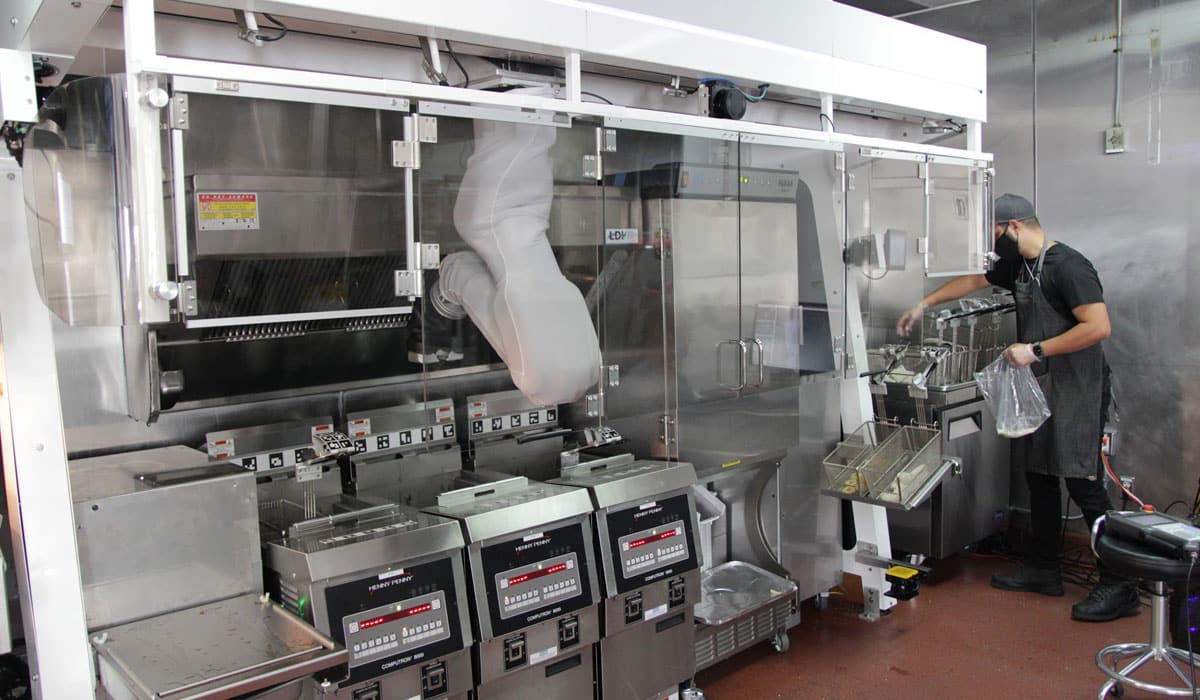A global pandemic necessitating mass quarantines sits near the top of the list of potential inconveniences that restaurateurs could face. On the other hand, the most prolific food item in all of dining—the fast-food style flat hamburger patty—was supposedly born out of inconvenience. Legend has it that Walt Anderson, the short-order cook who founded White Castle, got annoyed at how long a meatball was taking on the grill and flattened it with his spatula out of frustration, changing the restaurant industry forever.
Not only that, but Anderson started his first hamburger stand with an $80 loan (presumably not long after his meatball incident). This was back in 1916, so a similar loan today would put about $2,000 in your pocket. That’s enough to start a burger stand or a food truck, but it’s fair to say you’d have a bit more competition on your hands than Walt did.
Anderson soon saved enough to open a shop, and White Castle was born in 1921. It now has 375 locations and is going strong, which is to say that Anderson and co-founder Billy Ingram did a lot with just a little. White Castle didn’t just change the restaurant landscape with its unique menu offerings but also with its assembly line kitchens and standardized stores.
This story just proves that doing “more with less” is second nature for restaurant owners, and with that in mind, here’s a look at three modern technologies bringing that philosophy to the forefront against the backdrop of COVID-19.
Three fast-moving innovations supporting restaurants in difficult times
Online ordering
Online ordering systems are no longer an auxiliary sales channel. They are a lifeline. With dine-in sales at record lows, but takeout and delivery up more than 50 percent, a digital customer portal is virtually a life-or-death asset for restaurants, and those lacking one have already paid dearly.
Of course, online ordering was already reported to be the industry’s fastest-growing segment before the pandemic. But now, innovation within that segment has accelerated, largely because of pushback from both owners and consumers against the high commission fees charged by third-party order-and-delivery providers.
Chipotle’s new Chipotlane has customers ordering via mobile phone and picking up meals at drive-thru lanes, while “ghost kitchens” and “virtual restaurants” are putting online ordering in the driver’s seat instead of the sidecar. These new digital-first concepts are born of necessity and are ramping up to change the entire eating-out paradigm.
Touchless pay
Non-contact payment has been on the horizon for some time now, and a lot of the things said about online ordering above can be said of touchless pay as well. What’s interesting, though, is that many emerging forms of payment are designed to function independently of how you order. They’ll work if you order via mobile and equally well if you order in-store.
Examples of this include Apple Pay, Google Pay, Samsung Pay, and Chick-fil-A’s new cashless locations. Upsides to touchless systems include faster transactions, higher security, simplified business processes, and—the big winner for 2020—increased hygiene.
BOH automation
It’s not news to restaurant owners that labor costs as much as food ingredients. And while online ordering and touchless payment make it possible for businesses to survive the pandemic without much front-of-house presence, continuing service means that in the back-of-house, the show must go on. But does the work need to be done by people?
Increasingly, the answer is no. If you work in fast food, you probably already know about Flippy, but you might not know that the famous robot doesn’t just make burgers anymore. It now has a 19-food repertoire, including French fries. Robots are also cleaning and making cocktails, and there’s already plenty of precedent for automation of dangerous and tedious tasks like cooking oil management. Obviously, we’ve been on the path toward automation for years, but COVID is responsible for a new surge of innovation.
Restoring an industry
There is no doubt that “having less” is on the minds of restaurant owners. Since the beginning of the pandemic, the F&B sector has bled millions of employees, tens of millions of dollars in revenue, and seen thousands of restaurants close down for good.
However, the very word “restaurant” comes from the French verb restaurer, which means “to restore or refresh.” Although these are trying times, it may be that the end result is a restored industry with a refreshed sense of its purpose and mission to serve. At the very least, there’s plenty to chew on in the meantime.
As Chief Marketing Officer for Restaurant Technologies, Aric Nissen has over 25 years experience leading customer growth, business performance, and digital innovation initiatives. Aric has run point on several of the highest-rated consumer advertising campaigns ever measured by USA Today’s AdTracker, including the efforts behind Dairy Queen’s signature Blizzard brand doubling in size in less than five years. Recognized as a “Marketer of the Year” by the Minnesota Advertising Foundation and a “40 under 40” leader by the Business Journal, Aric’s insights have been featured by Food Network, Brandweek Magazine, and other industry-leading sources.













